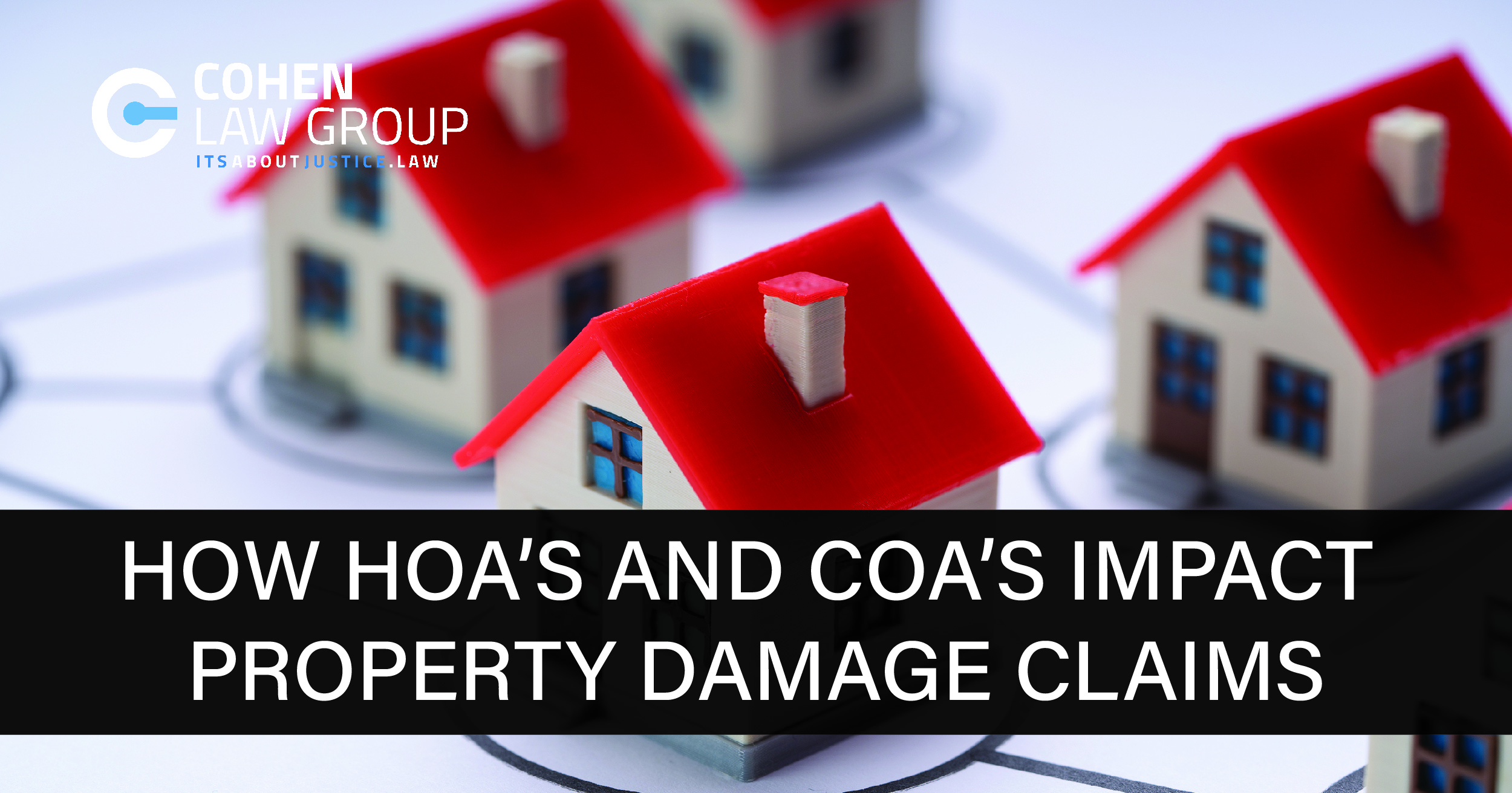Anyone who has ever lived in an Homeowners Association (“HOA”) or Condominium Owners Association (“COA”) community will start off with the upsides: my yard work is taken care of, there is a gate that makes me feel secure, the homes are all close together so there is a greater sense of community, I don’t have to maintain the community pool or gym, the homes all have to meet a certain standard that regulates our property values, etc. People often try to leave out the downsides like ordinance violations, trouble finding parking for visitors, seeking association approval before making repairs or improvements to your own home, etc. Moreover, in many communities the HOA and COA rules, regulations, ordinances, and declarations can cause serious problems for homeowners, especially if they have a property damage claim.
HOAs and COAs can and often do include regulations for cleaning and painting your home regularly in the association’s declaration. Under Florida Statute 720.303, an association’s declaration is recorded with the county land records of the county where the association is located and sets forth the association’s restrictions and covenants, the duties and powers of the board and officers, the manner in which association voting and elections occur, the process for calculating and collecting assessments, and any restrictions on the powers of the board or association. While proper home maintenance is encouraged for homeowners by their insurance companies, mortgage companies, and HOA/COA communities, certain maintenance can potentially cause damage to the home.
For example, HOAs and COAs usually include requirements to pressure wash the roof of the home, especially where the homes have tile roofs that are susceptible to discoloration but can withstand pressure washing better than other types of roofs like shingle that cannot typically withstand pressure washing. During pressure washing, most companies need to physically go on the roof with their pressure washing equipment, which on its own may be heavy and bulky. Thus, even if the pressure washing is done properly, there is still at least one person walking around on the roof with potentially heavy equipment.
While tile roofs are often made of concrete and can withstand a degree of foot traffic, it becomes harder to prove a roof did not sustain any damage during pressure washing when at least one person, who is not a roofer or engineer, walked all over a roof with heavy equipment. Not only that, the heavy equipment is designed to blast water onto the roof at a strength of 2800 pounds per square inch in order to clean the roof. When that amount of water is blasted onto tile roofs, it is possible to cause damage if the pressures washers are not extremely careful.
Another issue with HOA and COA claims is the records kept by the association. For example, a lot of HOAs and COAs have records of when someone has made repairs to their home or when someone committed a violation related to maintenance of their home. In the event a homeowner has been out of town and not been able to paint their home per the requirements of the HOA or COA, the homeowner will receive a violation that may contain language that the homeowner has not properly maintained their home in accordance with the community guidelines. While a notice of the violation on its own is already problematic for homeowners, the failure to correct the issue could result in a fine.
The above examples related to painting and pressure washing a home illustrate how HOA and COA requirements can impact a property damage claim. In both examples, the homeowners receive notices that they need to take action in order to avoid a fine from the HOA or COA. In the roofing example, the homeowner needs to ensure they have not and do not plan on making a roofing claim before pressure washing. In the event a home is damaged in a storm and the homeowner pressure washes the home between the date of the storm and the date the insurance company was able to inspect the damage from the home, the insurance company will argue that the damage to the roof is from pressure washing and NOT from the storm that actually caused damage. In the event the homeowner receives a violation for failure to pressure wash the roof, the carrier will argue the homeowner has not properly maintained the home in accordance with the policy and deny the claim. In instances where homeowners receive these violations while a roof claim is being adjudicated,
In the painting example, a letter from the HOA or COA stating that the home has not been properly maintained under the HOA/COA guidelines will damage a construction defect claim for the stucco on the outside of the home. A lot of homes in Florida that were built between 2005 and 2010 during the downturn in the economy are built with stucco cladding on the outside. While stucco is an attractive choice for Florida homeowners, most of the stucco applied to homes during this time period was done so in a defective manner that can cause the stucco to crack and allow further water intrusion and cracking. During the litigation of a case where a homeowner alleges the stucco was improperly installed, a letter stating that the homeowner has not properly maintained the home by painting it will be detrimental to their case. Additionally, if the stucco is showing signs of damage and the stucco is painted per the association regulations, the carrier will not be able to see the conditions since they have been painted over. What is worse is that the defective stucco will continue causing damage to the substrate of the home because painting alone will not resolve issues with cracking and defective stucco.
For these reasons, it is critical that homeowners work together with HOAs in order to ensure the property and claims are protected to the highest degree.
John Windle, ESQ.








